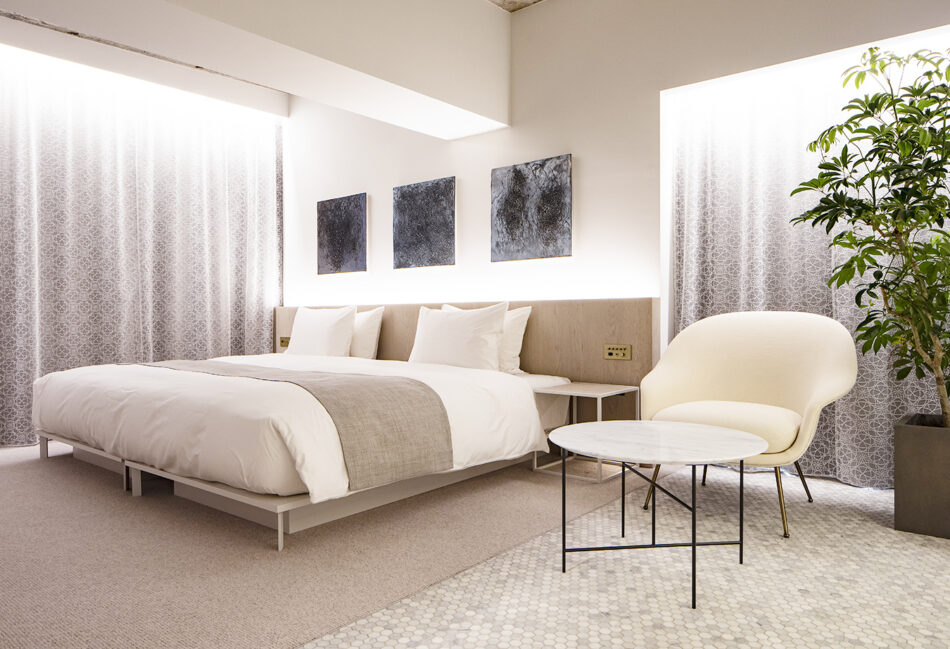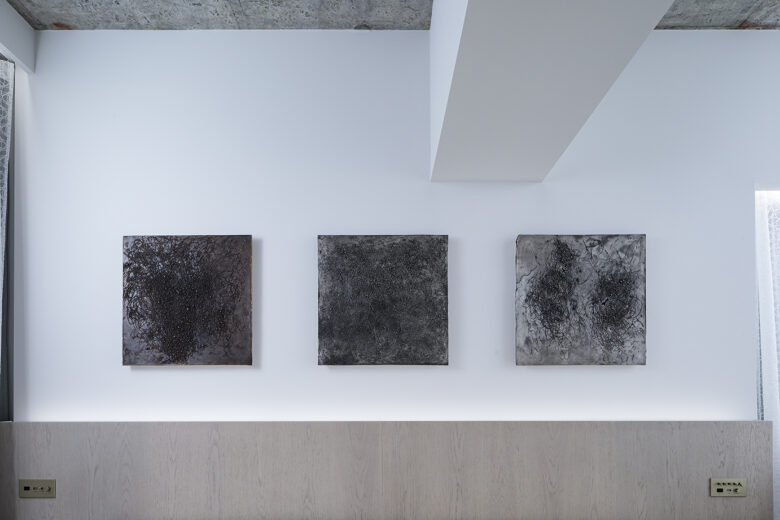ROOM 14 村田 峰紀 / MINEKI MURATA


1979年、前橋市生まれ。2005年多摩美術大学美術学部彫刻学科卒業。
主な個展に、「+」(2017年、Gallery HASHIMOTO、東京)、「Vision Inside」(2018年、rin art association、群馬)、「ボーダーマン」(2019年、Art Center Ongoing、東京)、「effect」(2021年、rin art association、群馬、 「share」(2023年、多摩美術大学彫刻棟ギャラリー、東京)、「Transition」 (2023年、まえばしガレリアギャラリー2 rin art association、群馬)、「out-of-body」(2024年、rin art association、群馬)など。
主なグループ展に、「“TWO STICKS” Think Tank Lab Triennale」(2015年、The Museum of Architecture in Wrocław、ポーランド)、「VOCA2015-現代美術の展望」(2015年、上野の森美術館、東京)、「群馬の美術2017―地域社会における現代美術の居場所」(2017年、群馬県立近代美術館、群馬)、「雨ニモマケズ」(2019年、BankART Station、神奈川)、「The Place of Encounter ~白井屋ホテルの8人の作家~」(2020年、フィリップス東京、東京)、「ニューホライズン 歴史から未来へ」(2023-2024年アーツ前橋、群馬)など。
「2019Live International Performance Art Biennale」(2019年、カナダ)、「間人 首くくり栲象×村田峰紀×山川冬樹」(2016年、前橋芸術文化レンガ蔵、群馬)など国内外でパフォーマンスを多数行っている。
2023年度第21回 上毛芸術文化賞受賞。
村田は、パフォーマンスアーティストとして、「かく(書く、描く、掻く)」という身体的な行為を作品化している。村田のパフォーマンスを一度でも見たことがあれば、その姿を忘れることはないだろう。言葉になる前の唸りのような音と共に、木材や紙などの支持体にボールペンなどを使って一心不乱にかき続ける。次第に削れていく支持体と、村田の疲労に変化は見えるが、物語のような始まりと終わりはなく、「かく」という反復行為がひたすら繰り返され、描くと同時に削られた作品は、絵画と彫刻の要素を共に持ち合わせている。パフォーマンスの果てに絵画やインスタレーションとして発表される作品に見られる穴は、「傷」や「痕跡」を通り越し、ねじ開けられた風穴のように見えなかった向こう側の景色を見せる。これまで様々な素材に「かく」をいう行為を刻み付け、作品化してきたが、本作では蝋板にボールペンでドローイングを行い、鋳造工程を経てブロンズの作品として仕上げている。近年は版画の技法を取り込んだ制作なども行う村田の新たな展開と言える。刻み付けられた痕跡に眼と耳を向ければ、一本の線から始まった反復の集積はやがて渦を作り、金属に置き換えられたことで、より遠くへ届くような高音を想起させる。ドローイングによって生み出された小さな振動は、村田の身体と支持体を往復しながら反響を繰り返し、やがて大きな共振を生み出す。
Born in Maebashi, in 1979. Graduated from the Department of Sculpture, Faculty of Art, Tama Art University in 2005.
Major solo exhibitions include “+” (2017, Gallery HASHIMOTO, Tokyo); “Vision Inside” (2018, rin art association, Gunma); “Borderman” (2019, Art Center Ongoing, Tokyo); “effect” (2021, rin art association, Gunma); “share” (2023, Tama Art University Sculpture Gallery, Tokyo); “Transition”(2023, Maebashi Galleria Gallery 2, Gunma); “out-of-body” (2024, rin art association, Gunma).
Major group exhibitions include TWO STICKS Think Tank Lab Triennale” (2015, The Museum of Architecture in Wroclaw, Poland); “VOCA2015-The vision of contemporary art” (2015, the Ueno Royal Museum, Tokyo); “Art of Gunma 2017 – Place for modern art in local society” (2017, The Museum of Modern Art, Gunma); “Singing in the Rain” (2019, BankART Station, Kanagawa); “The Place of Encounter – 8 Artists of Shiroiya Hotel” (2020, Phillips, Tokyo); “New Horizon: Vision of the Future” (2023-2024 Arts Maebashi, Gunma).
Murata performed in and out of Japan at exhibitions such as “Genjin: Takuzo Kubikukuri x Mineki Murata x Fuyuki Yamakawa” (2016, Maebashi Art Culture Brick Warehouse, Gunma); “2019 Live International Performance Art Biennale” (2019, Canada).
Received the 21st Jomo Art and Culture Award (2023).
As a performance artist, Murata explores physical activities around the idea of kaku, a Japanese word which can variously be translated as “to write”, “to draw”, and “to scratch”. His performances are unforgettable. With preverbal growls, he frantically kaku-s (writes, draws, scratches) on supports like wood and paper with ballpoint pens and other implements. The supports are gradually carved away and Murata grows more fatigued, but there is no beginning or end in the manner of a story—only a repetition of the act of kaku. The works created, simultaneously “drawn” and “scratched away”, have the qualities of both painting and sculpture. At the end of each performance, the work is presented as a painting or installation with a hole in it that goes beyond marks or traces to show the formerly concealed scenery on the other side, like a wind cave wrenched open.
Murata has created art by inscribing the act of kaku on various materials. For this work, he used a ballpoint pen on a wax tablet, then used a casting process to create a finished bronze. In recent years Murata’s work has shown new development in his incorporation of the technique of woodcut printing. Looking closely and listening carefully to the inscribed traces, the viewer can discern an accumulated repetition beginning with a single line, gradually becoming a spiral and then being replaced by metal. The result suggests a high note resounding into the distance. The small vibrations created by drawing slowly develop a larger resonation as they echo back and forth between Murata’s body and the supporting material.

